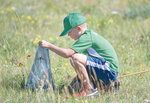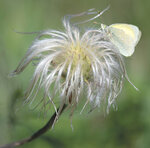Mostly Cloudy, 37° F
Vehicles slowed as they came upon a couple dozen people in meadows dappled in vibrant wildflowers on either side of the Chief Joseph Highway.
“What do you see,” asked one …
This item is available in full to subscribers.
The Powell Tribune has expanded its online content. To continue reading, you will need to either log in to your subscriber account, or purchase a subscription.
If you are a current print subscriber, you can set up a free web account by clicking here.
If you already have a web account, but need to reset it, you can do so by clicking here.
If you would like to purchase a subscription click here.
Please log in to continue |
|




Vehicles slowed as they came upon a couple dozen people in meadows dappled in vibrant wildflowers on either side of the Chief Joseph Highway.
“What do you see,” asked one driver in a vehicle with Illinois plates, nearly stopping in the middle of the road. Visitors often associate a collection of cars parked in a pullout with a bear sighting.
“We’re looking for butterflies,” one of the hunters replied.
The visitor was almost immediately back on the gas; polite but not inspired by the answer. While bison, sheep, goats, lions and bears are more popular in these parts, there are few creatures in the forest as beautiful and diverse as butterflies. And, as important pollinators, they need to be counted, according to the North American Butterfly Association.
Since 1993, the organization has been hosting a citizen science butterfly count program in the U.S., Canada and Mexico. Across North America there are approximately 450 annual counts consisting of a compilation of butterflies observed at sites during a one-day period. Wyoming has three organized counts, including two in the Greater Yellowstone Ecosystem.
The Cody Conservation District has been sponsoring the count along the Chief Joseph Highway for the past 12 years. Former horticulturalist and extension agent Bobbie Holder and National Forest Service wildlife biologist Marynell Oechsner are the district’s count leaders, recruiting hunters and organizing the events.
Annually published results from the hundreds of counts provide a tremendous amount of information about the geographical distribution and relative population sizes of the species counted, the NABA reports. Comparisons of the results across years can be used to monitor changes in butterfly populations and study the effects of changing climate and habitats.
Each year the Park County counts grow bigger; last week’s event being the largest yet, Holder said. But that doesn’t mean they found more butterflies. Quite the opposite, Holder said — the group caught, identified and released about 35% fewer this year.
When the hunting party arrived in the fields, they were concerned. Most years butterflies were apparent, filling the air by the time the group had finished their pre-hunt conference.
“It was a little cool and the butterflies were slow to wake,” Holder said.
Two highly motivated teams set out with nets, plastic cups and field guides in tow ready to catch and identify every butterfly in sight. This year they had to hike further than usual to catch their prey.
The count was held a week later than usual due to the unusual amount of rain hitting the area this season. They found 29 individual species and 229 butterflies over the three hour target time. The yearly average is about 350 butterflies, which is quite a chore — especially the task of identifying each one captured.
There were an abundance of Melissa’s blue butterflies, field crescents and small wood nymphs. Blue is actually an extremely rare color in nature. Melissa’s blues have scales that overlap, refracting light similar to a prism. So, when the light hits the wings, it is refracted against the scales and comes off as blue. The species was the most numerous found Friday.
One bad year with fewer butterflies will not result in panic. Weather and the current cycle of host plants play into the equation; nobody will argue this has been a strange year for weather in northwest Wyoming.
Holder and Oechsner only failed to identify two of the species captured. Not bad considering the state has about 200 species of butterflies, which is more than some states in the region. The Great Plains, Rocky Mountains, valleys, national parks, lowlands along lakes and rivers, and basins are the ideal habitats for these species, according to butterflyidentification.com.
There were some surprises this year. The teams found six Hayden’s Ringlets. In the previous 11 years they had only ever seen one of the diminutive fliers. They are best identified by six or seven small submarginal eyespots ringed with orange freckled on the underside of the hind wings.
The entire process is done with care as to not harm the creatures, which shows keen conservation ethics, but makes identifications difficult when they just won’t sit still for even a moment.
“Last year we were backlogged. Everybody had butterflies in and I was trying to identify them all quickly. It’s stressful,” Oechsner said.
While organizers might have a few stressful moments, those volunteering to catch the butterflies are usually giddy with the fun activity and many come back year after year. Alice Flyr was enticed to join the group in its inaugural year and hasn’t missed one since.
“They are beautiful. You learn something new every time. It’s wonderful and magical,” she said after netting one of her first butterflies of the year — a clodius.
All age groups are welcome at the count. Young legs often give chase without thought given to energy reserves. They bound through the fields, triggering memories of youth in those who have long since given up running. However, more mature legs have the patience to wait for the right moment to pounce and have a soft touch once the butterfly is netted.
“We are not butterfly experts. We are butterfly lovers,” Holder told the volunteers prior to entering the meadows beneath the beautiful mountain peaks. “The data that comes from this place and this time of year, every year, is important. But more important than collecting data, I want you to fall in love with butterflies. I want you to be interested enough later on that you’re gonna check into it, you’re gonna start seeing them and you’re gonna start wanting to make sure that they’re OK.”
Several members of the Wyoming Service Corps joined in on the fun this year, introducing volunteers from across the country to the Park County count. On Sacred Ground, the Wyoming Service Corps, is part of the national Episcopal Service Corps. Young adult members are invited to “grow in spirit, vocation and commitment to care for creation” during their time with the group, according to the area chapter.
“Our goal for participants is that 10 months spent in community in wild, wonderful Wyoming will yield rich personal results. Corps members will share a contemplative environment in which to discern their greater place in the world,” the organization reports on its website.
Holder has converted several people into citizen science. She understands not everyone will have the same love for the delicate and alluring insects as she does. What she wants to combat is indifference to the important pollinators. Butterflies and other pollinators including bees, moths, birds and bats pollinate over 75% of the world’s flowering plants.
“Indifferences was the primary reason for the fall of the empire, wasn’t it?” she quipped.